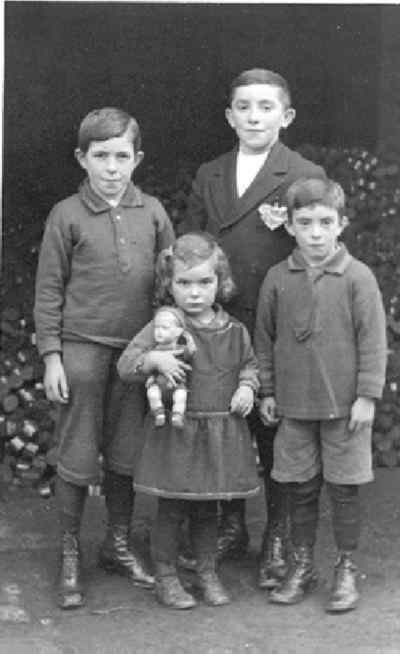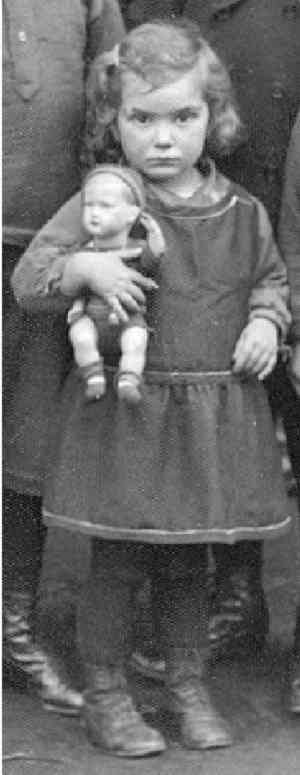
Figure 18a.--HBC is not sure about this image. It appears to be American, taken about 1910. It cerainly looks like three brothers and their sister.


Figure 18a.--HBC is not sure about this image. It appears to be American, taken about 1910. It cerainly looks like three brothers and their sister. |
From all appearances the younger child here looks like a girl. The long hair and barette certainly look like a girl. Some mothers in the early 20th century still dresse their younger boys in dresses and long hair, although by 1910 it was becoming less common than in the 19th century. The one factor that suggests this child may be a boy is that the doll is a boy doll. Most girls, of course, prefer girl dolls.
This image is undated. HBC dates the image to about 1910. The fact that it is a snapshot and not a studio portrait means that it was likely taken after 1900. The clothes that the boys wear look date them after the turn of the century, but before the 1920s. Thus 1910 seems a likely date. The long stockings in particular suggest this was not an early 1920s image.
This portrait is of an American child, but HBC has no idea where it was taken. The children looked to be reasonably, but not elegantly dresse. Thus the family looks to be a typical middle-class family.
HBC has no information on the identities of the children involved.
The older brother wears a suit jacket. The middle brothers are dressed alike. They wear long sleeved shirts and what look like long short pants with long-over-the-knee stockings.
The younger child wears a shirt or dress and what looks like a pinafore style garment with the same long stockings as the boys. It is not clear what the child swears under the pinny. Some mothers still used dresses for their younger pre-schooll boys. In tyhis instance, however, it is not clear what the child is wearing under the pinnyas it is unclear whether the garment is a shirt or dress.
Both boys and girls wore long stockings and all of the chilren here appear to be wearing the the same dark long stockings.

Figure 18b.--HBC believes that the fact that the doll is a boy doll is very significant in assssing the gender of the younger child. |
The older chilren all have short hair. The younger child has longer, but not shoulder-length hair. There appears to be a barette on one side. By 1910 fewer mothers were keeping their sons in long hair, but it was still not a rare practice. The hair style common in the 1910s, was this sort of mid-length hair and not the ringlets that had once been so common.
A HBC readers believes that the chilod may be a girl but thinks it is probably the littest brother. The doll the child is holding is definetly a boy doll. Looks like a pinny over either a dress or shorts and the hair is held in place
by a small barrette.
HBC notes nothing estinctive about this child's facial characteristics, it coul be either a boy or girl.
HBC believes that this child woul have been about 5 years old, presumably a pre-school child.
The only prop in this photograph is the doll that the younger child is holding. Notice that it is a boy doll. HBC believes that most girls would have preferred a girl oll and most parents would have brought a girl doll fir a girl. HBC als notes that several boys in HBC photographed with dolls do in fact have boy dolls. HBC concurs that the boy doll does strongly suggest that the child is a boy--although not definative. There are a variety of complivations. Perhaps the chil is a girl with one of her brothers' ol dolls or perhaps living with three brothers she wanted a boy doll. There is just no way of being definitive with these old images.
Navigate the Historic Boys' Clothing Web Site:
[Return to the Difficult gender page2]
[Introduction]
[Activities]
[Bibliographies]
[Chronologies]
[Contributions]
[FAQs]
[Gender]
[Links]
[Style Index]
[Boys' Clothing Home]